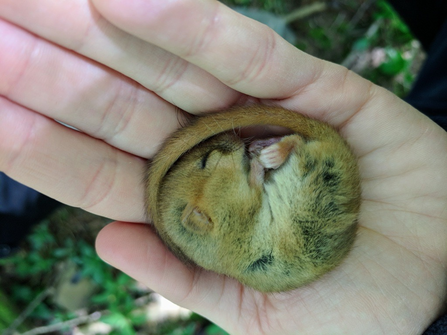It was only four years ago that I wrote about the findings of the State of Britain’s Dormouse Report 2019. At that time, dormice had declined by an estimated 51% since the year 2000. On reading the 2023 report, I was shocked and saddened to learn that the picture has worsened considerably, with the decline now estimated to be 70% since 2000.
The report identifies the main causes of this decline as the loss and degradation of dormouse habitats, intensified by the effects of climate change. Authors of the report, The People’s Trust for Endangered Species (PTES), are calling for the dormouse to be reclassified from Vulnerable to Endangered on the IUCN Red List, a move which we fully support. Applying this higher threat level, would help to bring in greater protections and direct funding where it is needed.




